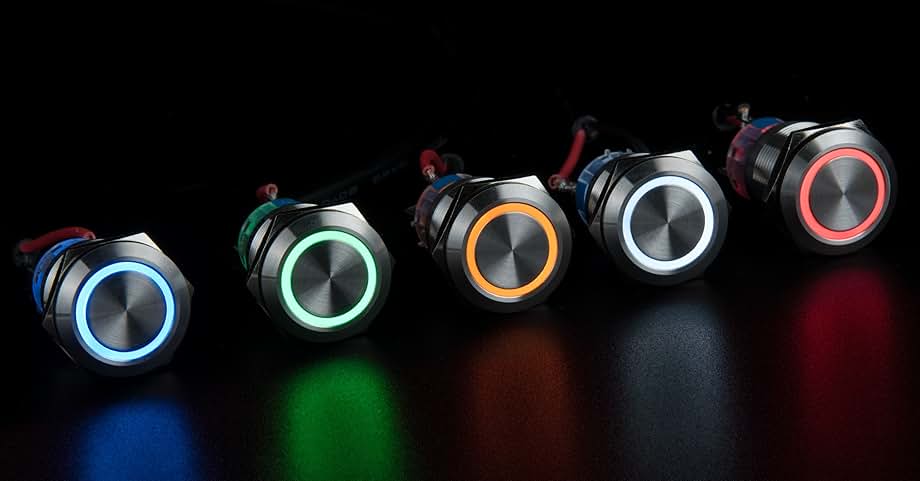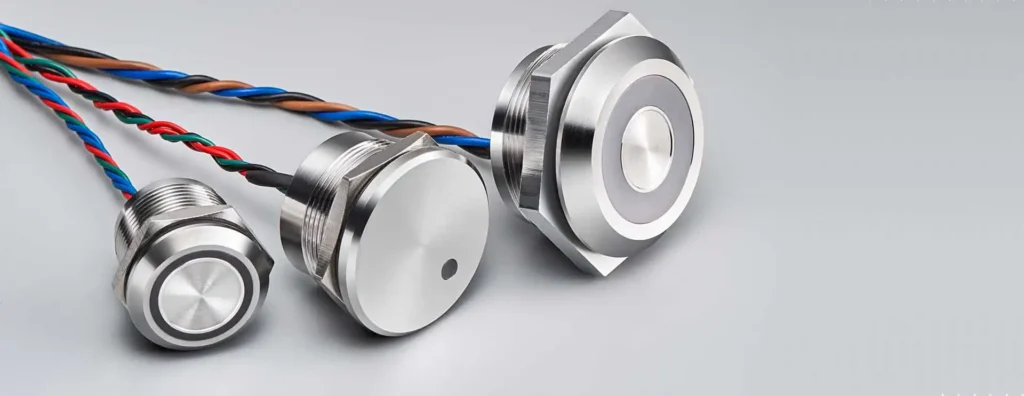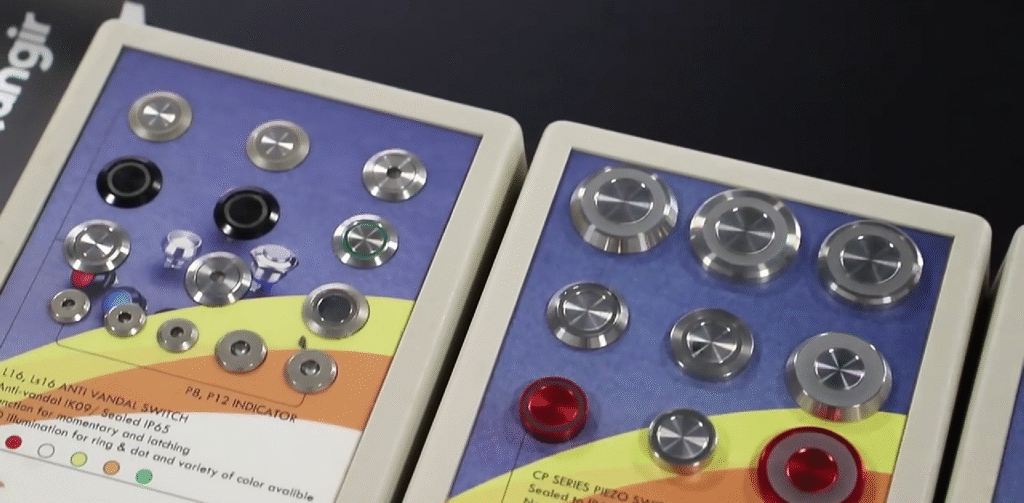
Switches are the foundation on which electrical devices, including touchscreens, operate. In the most basic sense, a switch is a component that controls an electrical circuit. When the switch is turned on, the electrical circuit is closed and, thus, complete. When the switch is turned off, the electrical circuit is open and, thus, incomplete. While all switches perform this operation, though, there are different types of switches, including mechanical and capacitive. So, what’s the difference between mechanical and capacitive switches exactly?
What Is a Mechanical Switch?

The most basic type of switch, a mechanical switch is a basic type of switch. Mechanical switches typically feature two conductive traces separated by air. When you press the mechanical switch’s button, the upper conductive trace makes contact with the bottom conductive trace, allowing the circuit close. When you release the switch’s button, the upper conductive traces bounces back to its open state.
The buttons on a TV remote control are mechanical switches. They are raised buttons that, when pressed, force an upper conductive trace into a bottom conductive trace. Of course, mechanical switches are used in countless other applications, some of which include computer keyboards, human machine interfaces (HMIs), household appliances, calculators and more.
What Is a Capacitive Switch?

Capacitive switches are also used to open and closed an electrical circuit, but they use a completely different method of operation than mechanical switches. Rather than featuring two conductive traces separated by air, capacitive switches use a capacitive sensor that measures changes in capacitance. A capacitive switch will constantly emit a small electrical current across the surface of the button. When you touch this button, your finger will absorb some of the electrical current, thereby causing the switch’s capacitance to drop. The capacitive switch will detect this reduction in capacitance and respond by completing the circuit.
Capacitive switches can be compared to capacitive touchscreens. Both capacitive switches and capacitive touchscreens are designed to measure capacitance. The human body is an excellent conductor of electricity. When you touch an electrically charged object or surface with a bare finger, your finger will absorb some of the object’s or surface’s current.
One of the benefits of using a capacitive switch is the simple fact that it requires little or no pressure to operate. With a mechanical switch, you must press the button hard enough so that the upper conductive trace comes into contact with the bottom conductive trace. With a capacitive switch, on the other hand, you only need to touch the button with a bare finger.
 EN
EN




